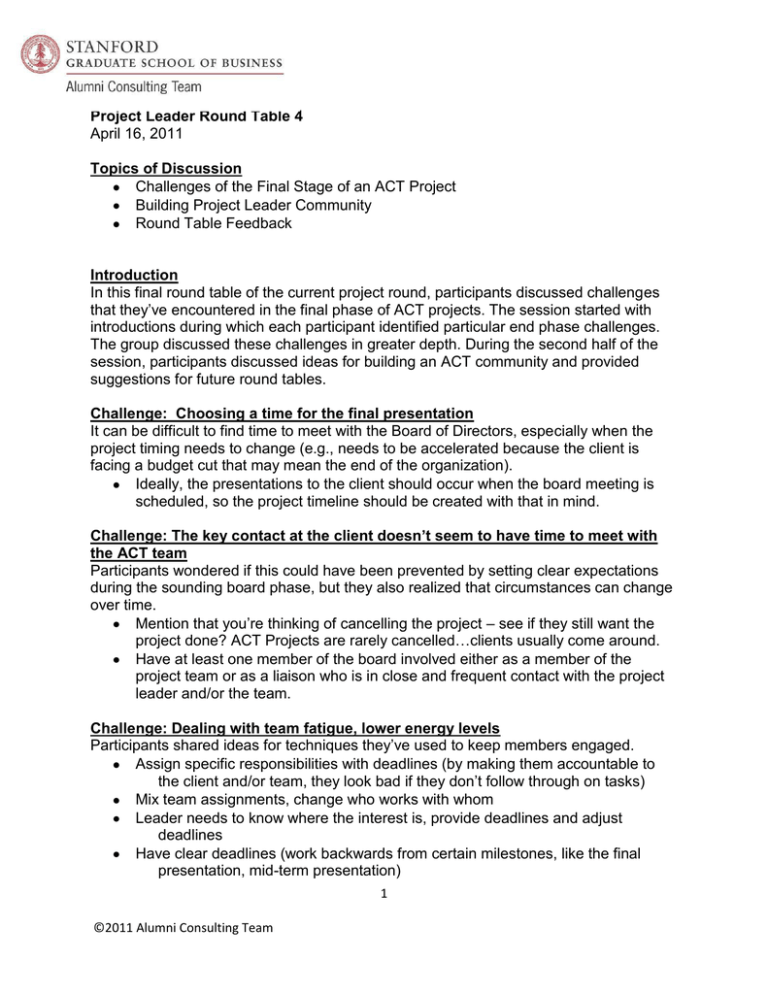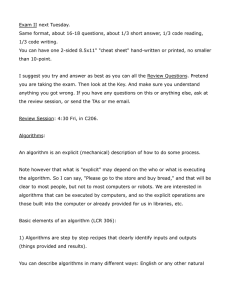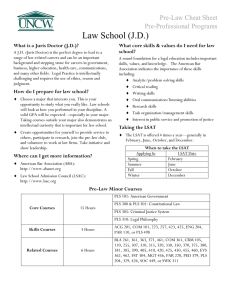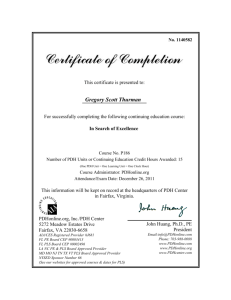Stanford ACT Project Leader Round Table 4 Topics of Discussion
advertisement

Stanford ACT Project Leader Round Table 4 April 16, 2011 Topics of Discussion Challenges of the Final Stage of an ACT Project Building Project Leader Community Round Table Feedback Introduction In this final round table of the current project round, participants discussed challenges that they’ve encountered in the final phase of ACT projects. The session started with introductions during which each participant identified particular end phase challenges. The group discussed these challenges in greater depth. During the second half of the session, participants discussed ideas for building an ACT community and provided suggestions for future round tables. Challenge: Choosing a time for the final presentation It can be difficult to find time to meet with the Board of Directors, especially when the project timing needs to change (e.g., needs to be accelerated because the client is facing a budget cut that may mean the end of the organization). Ideally, the presentations to the client should occur when the board meeting is scheduled, so the project timeline should be created with that in mind. Challenge: The key contact at the client doesn’t seem to have time to meet with the ACT team Participants wondered if this could have been prevented by setting clear expectations during the sounding board phase, but they also realized that circumstances can change over time. Mention that you’re thinking of cancelling the project – see if they still want the project done? ACT Projects are rarely cancelled…clients usually come around. Have at least one member of the board involved either as a member of the project team or as a liaison who is in close and frequent contact with the project leader and/or the team. Challenge: Dealing with team fatigue, lower energy levels Participants shared ideas for techniques they’ve used to keep members engaged. Assign specific responsibilities with deadlines (by making them accountable to the client and/or team, they look bad if they don’t follow through on tasks) Mix team assignments, change who works with whom Leader needs to know where the interest is, provide deadlines and adjust deadlines Have clear deadlines (work backwards from certain milestones, like the final presentation, mid-term presentation) 1 ©2011 Alumni Consulting Team Get your client involved in the wrap-up. Their input can help reenergize the team. Challenge: Project leaders need to be disciplined about keeping the presentation succinct After several months of work, most PLs find they have a great deal of data and they need to boil it down. Techniques used include: Prioritize recommendations, be wary of overwhelming client with too much info in the final presentation (use appendices) Keep points crisp Make sure what you’re saying has basis, even if that basis is prior experience, and be careful of jumping to conclusions Set a limit on the number of slides, get team feedback, get client feedback on what they care about o Some PLs just provide a final PowerPoint presentation. Others like to write a report and provide slides, saying that writing a report helps them think more critically. But the team might not have the energy to write a report. Either approach is fine. When the team disagrees on final recommendations, talk to the client about it to see if they want to hear both viewpoints. Challenge: Coming up with recommendations that “will stick” and add value to the client Should you recommend bold changes or incremental ones that are more likely to be implemented? o Consider what the organization needs o See if client is receptive, that is if the ED, key influencers are on board with the vision, then they’ll be more likely to adopt the recommendations o Have the client involved in the writing of the recommendations Acknowledge your limitations, we aren’t experts in their organization but we can provide the organization with best practices research and an objective viewpoint o Deep expertise might not be necessary, they just need simple advice, we’re general consultants. Common sense goes a long way. o Bring in an expert to help out with a specific area, this can be very helpful. You can find an expert by networking, using the alumni directory, Stanford faculty, ask ACT (an alum answers those questions) o Have client person on the team with that expertise Provide 3 or 4 specific things the client can accomplish in the next 2 months (short-term)…what they can start doing right now. Put this next steps slide at the very end with timeframe. Leave time at the end of the presentation to discuss implementation issues Think about the communication style that you use o Start with positive and then talk about what can be improved, this makes the client more receptive to your message 2 Discussion Topic: How do you define closure with the client and with the team? When it comes to closure with the client, is it just making the final presentation? Try to have final presentation in front of full board with all of the team there. The client usually thanks the team, so it’s a positive experience for them. Some team members and PLs offer to be an ongoing resource to the client, of course this is up to them PLs should have the annual follow-up and submit a form to ACT…some clients don’t want a 1 year follow-up Closure w/ team ACT provides a generous stipend for teams to celebrate the completion of their projects – 40% of teams have a post-project dinner, it’s unclear why Discussion Topic: How can we build a stronger PL/ACT community? Because ACT participants volunteer for specific projects, being a volunteer can feel like a series of one-off isolated experiences. After volunteering a couple of times, some volunteers do feel connected to ACT, and they value the experience in non-profit consulting and the connections with some of the other volunteers. For the less committed, there’s a risk that it’s easy to volunteer once and forget ACT. How can we build a stronger connection to ACT? Roundtable discussions are well-liked but we need to attract more participants o Move it around so that it’s easier for others to attend, SF/North Bay would be good o Conference call o Be sure to invite potential PLs Volunteer days o Outward Bound team building event is in the works. It will be a Sunday morning group experience, followed by lunch & recognition. ACT event (1x a year), Kickoff meeting Social networking for PLs, would the Stanford Alumni Association networking tool help? o The PL group has been created so that PLs can talk to each others and exchange ideas i. How do you get people to use it? It needs to be active, prepopulation helps but it needs continual updating with fresh material ii. Participants were doubtful that the online group would be helpful but said that it could be generational and that we should talk to younger ACT team members and PLs Enewsletter o BLACT recommends it but it’s a question of who will do it, is it worth the effort o Can it help attract potential PLs? Several participants would like to work with certain people again in the future, so we discussed how to facilitate that 3 o Encourage people to sign up together o Have people indicate who’d they like to work with and try to assign them to teams based on those preferences o If a team is understaffed, show who has signed on as this can help with recruiting RT Evaluation What should we change for the next round? Participants liked the idea of mixing up the topics vs. repeating the same topics that we’ve already discussed. Potential topics include: Is strategic planning of value to NPs? What are the critical differences between for profit and nonprofits? Board governance. o Should it be ACT related or is it okay to be general? One participant said the RTs should be used to address the biggest issues related to ACT Participants: Steve Bowling Dr. Gene Fram Susan Linton (note taker) Dave Olson Tony Ramsden Jon Richards (facilitator) 4




